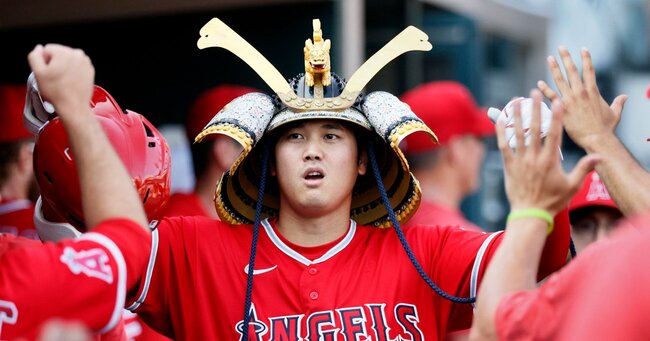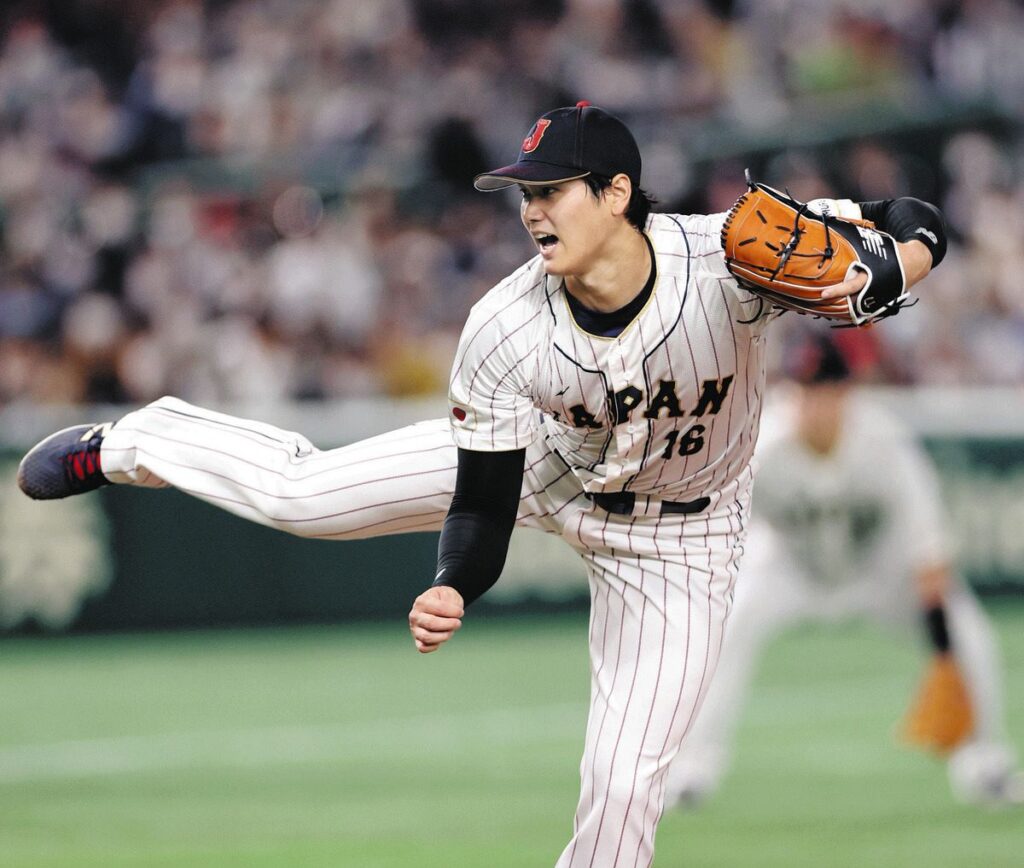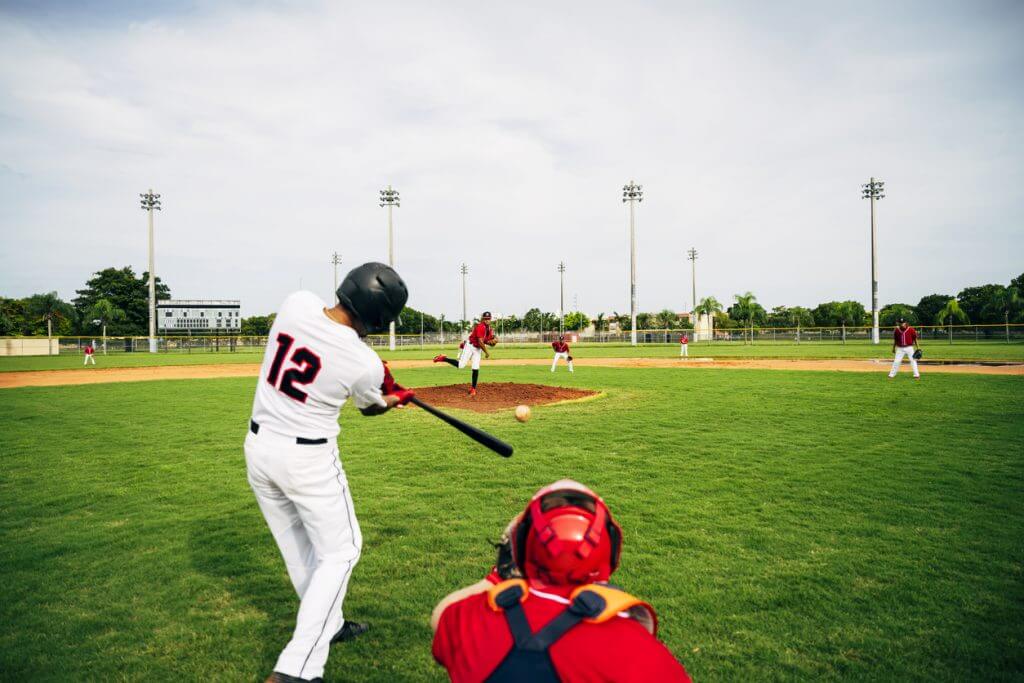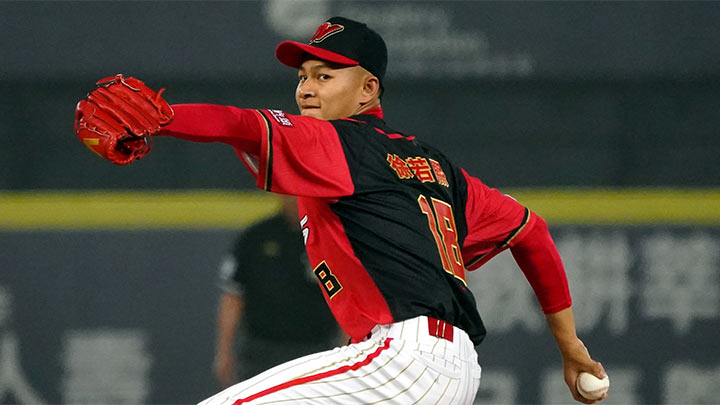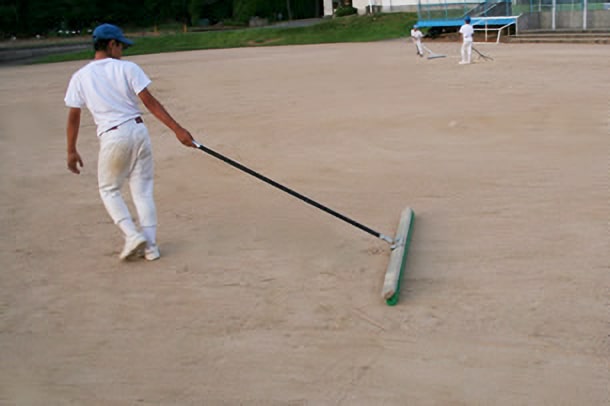
In baseball, batting practice plays a very important role.
Many coaches and players are adopting it because it helps improve defensive ability, reaction time, and team coordination.
However, to hit an effective knock, you need to understand the correct technique and the proper way to practice.
This guide will explain in detail how to hit a baseball knock.
It covers a wide range of topics, from the basics of knock practice to applied techniques, and even tips you can learn from professional players.
We provide content that can be used by players of all levels, from beginners to advanced players.
Read this to practice knocking effectively and improve your defensive skills.
目次
What is a knock in baseball?
In baseball, batting practice plays a very important role as part of defensive training.
This practice allows infielders and outfielders to practice defensive moves similar to those they would in a real game, improving their defensive skills.
Effective knocking can improve a player’s reaction time, catching technique, and throwing accuracy, greatly improving their performance in games.
Definition and purpose of baseball knock
Knocking refers to practice in which a coach or instructor hits a ball with a bat and the players catch it.
The main purpose of the knock is to improve players’ defensive skills and reaction speed.
Knocking exercises recreate various situations that occur during a game, helping infielders and outfielders develop the ability to move quickly and accurately in preparation for actual plays.
The purpose of the knock practice is as follows:
-
Improving catching skills :
- You can learn the proper way to catch a bouncing ball or a fly ball. By training your reaction to a variety of batted balls, players can reduce errors in real games.
-
Improved throwing accuracy :
- It helps you improve your throwing technique by being quick and accurate after catching the ball, which is crucial when trying to get a double play or an out.
-
Positioning and movement review :
- By simulating real match situations, players can review and correct their positioning and movements.
History and evolution of knock practice
Knocking practice has developed along with the history of baseball.
In the early days of baseball, it started out spontaneously as part of defensive practice, but as its importance gradually came to be recognized, it was established as an organized training routine.
In recent years, knock practice has become based on a scientific approach.
By using the latest technology to adjust the speed and angle of the ball, we are now able to recreate situations that are closer to real-life situations.
In addition, by utilizing video analysis and sensor technology, players’ movements and reaction times can be analyzed in detail, allowing for more efficient training methods to be developed.
The benefits of knock practice
Knock practice offers many benefits to players.
Here are some of the main benefits of knock practice:
-
Practical training :
- Knock practice recreates various situations that may occur during a match, allowing players to practice in conditions that are closer to the real thing, improving their ability to respond in a match.
-
Strengthen team collaboration :
- Knocking practice is an important way to improve the defensive ability of the entire team. By having infielders and outfielders work together, the team will become more united and the number of defensive errors will decrease.
-
Improve concentration and reaction speed :
- Through knock practice, players can improve their concentration and develop quicker reactions, which will allow them to calmly deal with unexpected plays during a match.
-
Psychological preparation :
- Practicing in conditions similar to a real match also helps prepare players psychologically. By getting used to the pressure of a match, they will be able to perform at their best in the actual match.
Knocking practice is an essential part of training for baseball players.
Done correctly, it can greatly improve a player’s technique and mental strength.
Utilizing the latest information and technology, you can conduct effective knocking practice and improve your defensive skills.

How to choose the right knock bat
In order to effectively practice hitting in baseball, it is important to choose the right hitting bat.
Knock bats have different characteristics from regular bats and are a tool that helps players maximize the effectiveness of their training.
Here we will explain in detail how to choose the material and length, the importance of balance and weight, and the characteristics of bats used by professional players.
How to choose the material and length
The material and length of the knock bat should be chosen based on the intended use and personal preference.
Below are some tips on how to choose each one.
-
Material :
- Wooden bat : Traditional wooden knock bats provide a natural hitting feel and directly transmit the feel of the ball, which allows you to check the quality of the hit and helps improve your technique.
- Metal bats : Lightweight and durable metal bats are characterized by their low fatigue even during long practice sessions. They also make it easier to hit the ball farther and can hit it over a wider range.
-
length :
- The length of a knock bat is generally chosen in the range of 33 inches to 37 inches. A long bat can hit the ball over a wide range and is suitable for practicing using the entire field. On the other hand, a short bat is easier to control and is suitable for practicing hitting the ball accurately.
The importance of balance and weight
Balance and weight have a big impact on the feel and effectiveness of a knock bat.
By choosing the right balance and weight, you can practice knocking effectively.
-
balance :
- Head balance : Head-balanced bats are heavy at the tip and are suitable for increasing the distance the ball can travel. They are advantageous when a large swing is required or when the ball needs to fly over a wide area.
- Mid-balanced : Mid-balanced bats are evenly weighted throughout the bat, making them easier to control and better suited for hitting accurate balls. They are especially good for practicing ball direction control.
-
weight :
- The weight of the knock bat varies from light to heavy. A light bat allows for quick swings and is less tiring even during long practice sessions. A heavy bat requires more power and helps build muscle strength, but it can easily cause fatigue, so you need to be careful about the length of time you practice.
Characteristics of bats used by professional players
The knock bats used by professional players have several common characteristics.
By taking these features into consideration, you can choose a more effective knock bat.
-
High quality materials :
- Professional players choose bats that are made from high-quality wood and metal, which gives them a good feel and makes them durable.
-
custom made :
- Many professional players use bats that are custom made to fit their hand size and swing style for optimal fit and performance.
-
Balance and weight optimization :
- Professional players choose a bat with the balance and weight that best suits their hitting style. It is important to understand the difference between head balance and mid-balance and find the bat that is best suited for you.
-
Grip Adjustment :
- Professional players adjust the grip of their bat by wrapping tape around it or using special grips to improve grip, which allows them to swing more consistently and control the ball.
Choosing the right bat is the first step to effective practice.
Choose a bat that suits your practice style and goals and improve your defensive skills.
It is important to take advantage of the latest technology and information to find the knock bat that is best suited for you.

Basic posture and stance for knocking
Correct posture and stance are essential for effective knock practice.
This allows you to hit the ball more accurately and powerfully, improving the quality of your defensive practice.
Here we will explain in detail the correct standing position and stance, how to adjust your hands and grip, and the key points and precautions to take when setting up.
Correct position and stance
In order to establish the basic posture for knocking, it is important to first consider your position and stance.
By taking the correct position and stance, you will be able to control the bat more easily and hit the ball more consistently.
-
Standing position :
- Position at bat : Stand in the center of the batter’s box and hold the bat in a position that makes it easy to control the ball. Stand with your feet shoulder-width apart and keep your body center of gravity steady.
- Direction : Face the direction you will be holding the bat, with your toes pointing toward the pitcher. This will help stabilize your swing path and make it easier to hit the ball accurately.
-
stance :
- Feet width : Keep your feet shoulder-width apart to keep your center of gravity low and create a stable posture. If your feet are too far apart, you will lose your balance, so it is important to keep your feet at a moderate width.
- Knee angle : Keep your knees slightly bent and flexible. This prepares you for a quick reaction and helps you transfer the power you need to swing effectively.
How to adjust the grip and grip
Proper hand and grip adjustments have a huge impact on your control of the bat and the quality of your swing.
Learning the proper grip will help you swing more consistently.
-
How to hold :
- Basic grip : Grasp the bat with both hands, wrapping your palms around it tightly, making sure there is no gap between your hands and that you have a firm grip on the bat.
- Position : Hold the bat with your dominant hand on top and your non-dominant hand on the bottom. Hand positioning varies from person to person, but generally speaking, the thumb of your dominant hand should support the bottom of the bat.
-
Hand Adjustment :
- Height : The height at which you hold the bat should be at shoulder height, with the head of the bat horizontal. This will stabilize the trajectory of your swing and make it easier to hit the ball accurately.
- Angle : Keep the bat at a natural angle so you can adjust it as you swing. Make sure the head of the bat isn’t pointing too far up or too far down.
Important points and precautions for the stance
Having the correct stance will improve the accuracy of your swing and the quality of your shots.
By observing the following points and precautions, you will be able to practice knocking effectively.
-
relax :
- Keep your shoulders relaxed. If you are tense, your swing will be stiff and the quality of your shots will suffer. Relaxing will allow you to swing naturally.
-
Gaze :
- Stay focused on the ball and keep your eyes on it. Keeping your eyes on the ball will help you swing with precision.
-
timing :
- Determine the timing of your swing and make sure to swing comfortably. Avoid swinging too early or too late, and catch the ball at the right time.
-
balance :
- Maintain your balance after the swing so that you can move quickly to the next movement. If you lose your balance during the swing, your shot will be less accurate and your next movement will be delayed.
By learning the correct basic posture and stance for knocking, you will be able to practice your defense more effectively.
By practicing with proper positioning and stance, adjusting your hands and grip, and observing the key points of your stance, you can greatly improve your defensive abilities.
Learn the correct posture and stance while referring to the latest information.
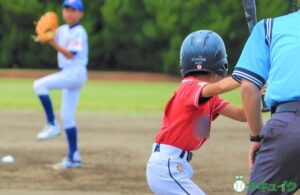
Basic knock technique
In order to effectively practice hitting in baseball, it is important to master the basic hitting technique.
By understanding the basic movements of a correct swing, how to find the ball’s contact point, and effective follow-through techniques, the quality of practice will improve and players’ defensive abilities will also increase dramatically.
Here we will explain each point in detail.
Basic movement of swing
When it comes to hitting the ball, the basic movement of the swing is very important.
By learning the correct swing, you can hit the ball with consistency.
-
Stance :
- Grip the bat firmly and stand with your feet shoulder-width apart. Bend your knees slightly to keep your center of gravity low and make sure the head of the bat is parallel to the ground. Relax your shoulders and keep your posture relaxed.
-
Take back :
- Before starting the swing, pull the bat back a little. Be careful not to lose your balance as you do this. It is important to take the bat back compactly and without using excessive force.
-
swing :
- Take the bat back and swing it down in one go. Work on making a smooth swing by coordinating your arms and hips. Use the rotation of your hips to transmit power so that the head of the bat moves smoothly toward the ball.
How to find the ball’s meeting point
Finding the right meeting point is important to hitting the ball accurately.
The contact point is the optimal point where the bat and ball come into contact.
-
Eye position :
- Look directly at the ball, align your eyes on it, and keep your eyes on the ball until the end.
-
timing :
- Watch the ball’s movement carefully and start your swing at the right time – avoid swinging too early or too late, and wait for the moment the ball will make contact with the bat.
-
Meet point adjustment :
- The meeting point varies depending on the individual swing style and bat length. It is important to find the best meeting point for you through practice.
Effective follow-through techniques
The follow-through after the swing also has a big impact on the quality of the ball.
By following through correctly, you can more easily control the direction and distance of your shot.
-
Continuation of the swing :
- Continue swinging even after you hit the ball, and swing the bat all the way through. By continuing to swing until your arms are fully extended, you can hit the ball with force.
-
Maintaining balance :
- It is important to keep your body balanced during the follow-through. If you lose your balance, the power of your swing will be dispersed and the quality of your shot will decrease. Keep your center of gravity firm and stabilize the trajectory of your swing.
-
Finishing position :
- At the end of the swing, raise the bat high and allow your body to naturally face forward. This finishing position completes the swing and allows you to smoothly transition to the next movement.
The effectiveness of your knock practice will be greatly improved by learning the basic movements of a correct swing, how to find the proper contact point, and effective follow-through techniques.
Keep these points in mind while practicing to improve your defensive skills. Be sure to incorporate the latest information into your daily practice.

How to practice knocking to improve your game
Knocking practice is an essential training for improving a baseball player’s defensive ability.
By incorporating effective training methods, players at a wide range of levels, from beginners to advanced players, can hone their skills.
Here we will explain in detail the basic practice menu for beginners, advanced practice methods for intermediate players, and advanced knock practice for advanced players.
When beginners start practicing knocking, it is important to master the basic techniques.
The following menu is designed to make it easy for beginners to get started.
-
Basic Catching Drills :
- Practice catching ground balls and flies alternately. Start at a slow pace and focus on catching the ball accurately. When catching the ball, it is important to make sure that your eyes are aligned with the movement of your hands.
-
Throwing Practice :
- We will practice throwing after catching the ball. We will aim for accurate throwing while taking the basic steps. We will focus on throwing straight to the opponent and check the movement of the arms and the coordination of the body.
-
Movements by position :
- Splitting up into infielders and outfielders, the students check the movements of each position. Infielders practice quick steps and accurate throwing, while outfielders practice movements to cover a wide range.
Advanced practice methods for intermediate learners
In intermediate lessons, we develop basic techniques and practice in realistic combat situations.
The following menu is designed for intermediate players looking to further improve their skills.
-
Speed up your knock practice :
- The same menu as the basic training is performed at a faster speed. This will improve your reaction speed in a real fight and help you learn accurate movements.
-
Situational training :
- We conduct situational training that simulates actual games, recreating specific scenarios such as double plays and defense with runners on base.
-
Strengthening teamwork :
- We will strengthen teamwork between infielders and between infielders and outfielders. We will check the timing and communication of teamwork and aim to reduce mistakes.
Advanced knock practice for advanced players
In the advanced training sessions, you will learn advanced techniques and aim to further improve your defensive ability.
The following menu is designed for advanced players to hone their skills for real-life situations.
-
High-speed knock practice :
- You will practice catching ground balls and fly balls hit at high speed. You will improve your reflexes and acquire quick judgment and movement. We will recreate situations that are just like a real game so that you can handle hard hit balls.
-
Dealing with irregular shots :
- This class will help you practice catching erratically bouncing balls and flies affected by the wind, giving you the skills to remain calm even in unpredictable situations.
-
Simulation Training :
- Using video analysis and sensor technology, you can practice while checking your own movements. Use the data to identify areas for improvement and improve your skills efficiently.
-
Pressure training in extreme situations :
- This course simulates pressure situations and teaches you how to defend accurately, improving your ability to react in the closing stages of a match or in tense situations.
When it comes to improving your knocking practice, it’s important to choose an appropriate menu according to the player’s level.
Once you have a firm grasp of the basic techniques, you can move on to applied practice and advanced training to steadily improve your skills.
Let’s incorporate the latest information and technology, conduct effective knocking practice, and improve our defensive skills.

The importance of mental training in knock practice
In knock practice, not only technical skills but also mental strengthening is very important.
Defensive drills are repetitive tasks that require you to stay focused.
You also need mental strength to withstand the pressure of a match.
Here we’ll go into detail about mental training to improve your focus, how to handle pressure, and how to self-evaluate and incorporate feedback.
Mental training to improve concentration
Improving your concentration is essential to getting the most out of your knock practice.
By incorporating the following mental training techniques, you can maintain focus and perform at your best.
-
Mindfulness :
- Mindfulness is the technique of focusing your attention on the present moment. Spending a few minutes before practicing, focusing on your breathing and calming your mind, will help you to concentrate better. This will help you block out distractions and focus on your technique while you practice.
-
Visualization :
- By visualizing yourself being successful, you will gain confidence in your actual play. Before practicing, you can improve your concentration by visualizing yourself catching the ball accurately and throwing it quickly.
-
Setting short-term goals :
- Setting short-term goals during practice helps you stay focused. For example, having a specific goal like “catch the next 10 balls accurately” can help you stay focused during practice.
How to handle pressure
It is important to have the right way of dealing with pressure during a match.
By incorporating the following methods, you will be able to work better under pressure and stay calm.
-
Breathing exercises :
- Deep breathing can help relieve tension. When you’re under pressure, take slow, deep breaths to slow your heart rate and make calmer decisions.
-
Positive self-talk :
- By speaking positive words to yourself, you can gain confidence. By engaging in self-talk such as “I can do it” or “As long as I stay calm, everything will be fine,” you can develop the mental strength to overcome pressure.
-
Leveraging experience :
- Remembering past successes can help you feel more confident. Thinking back to successful plays in previous matches and recreating the feeling of those plays can help reduce pressure.
How to self-assess and incorporate feedback
Self-evaluation and feedback are crucial for growth.
By doing proper self-assessment and incorporating feedback, you can improve your skills.
-
Objective evaluation :
- Use video recording to objectively evaluate your play. Check your movements and find areas for improvement to improve the quality of your practice.
-
Accepting feedback :
- Actively accept feedback from your coaches and teammates. It is important to not only receive positive feedback, but also suggestions on areas for improvement. This allows you to objectively review your own play.
-
Create an improvement plan :
- Based on self-evaluation and feedback, we will create a specific improvement plan. By clarifying which areas you need to improve and how, you can improve your skills efficiently.
Strengthening your mental state during knock practice directly leads to improved technique.
Dramatically improve your defensive performance by practicing mental training to improve concentration, how to handle pressure, and how to self-assess and take feedback.
Keep up with the latest information, conduct effective mental training, and improve the quality of your practice.

Tips for knocking learned from professional players
The knocking techniques of professional baseball players are a reference for many amateur players and coaches due to their high performance and precision.
Understanding how they hone their craft can help inform your own practice.
Here, we will explain in detail the secrets of professional players’ knocking techniques, what you can learn from actual practice scenes, and tips for improvement from the pros.
The secrets of professional players’ knocking techniques
The knocking techniques of professional players are the result of many years of experience and advanced skills.
You can learn a little bit about their techniques by following these points:
-
Consistency :
- By maintaining a consistent swing, professional players can hit the ball with the same quality every time, which increases the efficiency of defensive practice and helps players develop precise movements.
-
Ball identification :
- Professional players accurately judge the spin and speed of the ball to improve the quality of their hits, which improves their control over the ball and maximizes the effectiveness of their practice.
-
Proper force distribution :
- By adjusting the amount of force they apply, professional players can hit the ball to suit a variety of situations, from long-distance hits to short-distance hits.
Learn from actual practice scenes
There is a lot to learn from watching professional athletes practice.
Observing how they develop their skills can help you incorporate them into your own practice.
-
Repetition :
- Professional athletes thoroughly practice basic movements over and over again. This is important to make the movements ingrained in the body. By repeating the movements, you will be able to perform the movements accurately without even realizing it.
-
Simulation exercise :
- Simulation training that simulates a real match is also essential. By practicing with an awareness of the actual match, performance during the match will improve. Situational training is a training method that professional players always use.
-
Using feedback :
- By recording their movements during practice on video and receiving feedback from their coach, they can clarify areas for improvement. Professional athletes place great importance on self-analysis and feedback, and are constantly striving to improve their skills.
Tips for improvement from the pros
Here are some tips to improve your game that you can learn from professional players.
By incorporating these points, you can expect to improve your knocking technique.
-
Rhythm and Timing :
- By being aware of the rhythm and timing of your swing, you can improve the stability of your shots. Professional players place importance on rhythm and swing with natural movements. This helps them to maintain quality even during long practice sessions without getting tired.
-
Flexible response :
- They are always prepared to be able to respond flexibly to unpredictable shots and situations. Professional players receive a variety of shots during practice to hone their reaction speed. This improves their ability to respond in real games.
-
Mental Strengthening :
- Strengthening your mental state is also essential to perform at a high level. Professional athletes practice mental training to improve their concentration and how to deal with pressure. This allows them to make calm decisions and play during games.
-
Continuous improvement :
- It is important to constantly review your own skills, find areas for improvement, and work on them. Professional athletes are never satisfied with the status quo and always strive to reach higher levels.
There are many things to learn from the knocking techniques of professional players.
By incorporating these elements into your practice – consistency, repetition and using feedback – you can expect to improve your knocking technique.
While taking advantage of the latest information, learn the techniques of professional players and use it to improve your own skills.
